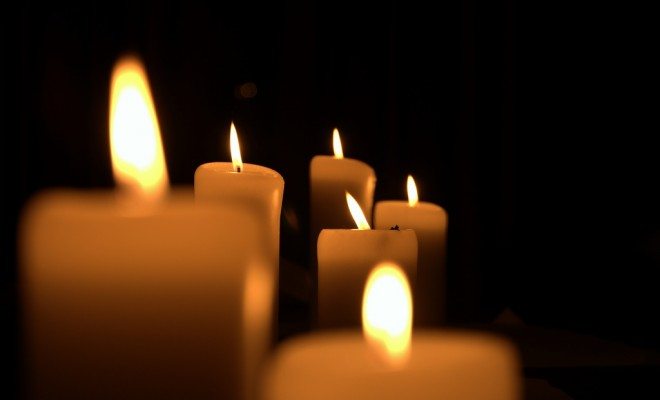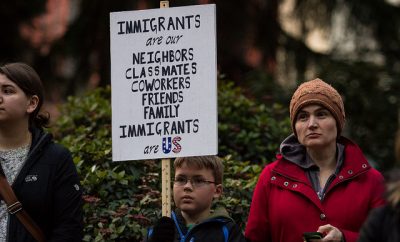 Image courtesy of [L.C. Nøttaasen via Flickr]
Image courtesy of [L.C. Nøttaasen via Flickr]
Entertainment & Culture
Sustaining Global Solidarity: Can Vigils Incite Activism?
This weekend, vigils were held all over the country in honor of the victims of last week’s ISIS attacks. There were hundreds of remembrance events held across the world: flags flew at half-mast, monuments were lit up with the image of the French flag, flowers were laid outside of French embassies, and candles burned through the night. These moments let us stand in solidarity with the populations of Paris, Beirut, and Baghdad but they also represent a global commitment to peace. Yet this commitment is already dissolving as the 24-hour news cycle spins onward and our attention is diverted by new issues. Read on to explore the fleeting nature of solidarity in the wake of tragedy, and what can be done to carry that solidarity forwards after the fact.
What Solidarity Looks Like
In the aftermath of many tragic events, informal memorials spring up across the globe. We are all familiar with the images of teddy bears, flowers, and posters stacked at the scenes of mass shootings and natural disasters. A vigil, or any form of remembrance event, takes these memorials a step farther by requiring the prolonged presence of activists and onlookers. Vigils–which commonly involve lighting candles and holding moments of silence–mark a unified act that includes an entire community. There is no membership requirement for participating in a remembrance event, all are welcome to grieve collectively–whether or not they lost a friend or family member during the event.
Remembrance events let us engage in collective empathy outside of our personal social circles. The word empathy evolved from the German einfühlung which describes observers projecting themselves “into” that which they observe–essentially, the experience of putting ourselves in someone else’s shoes. Empathy is considered a deliberate cognitive process, in which we take an active role, striving to share the emotions of another person in order to better understand them. This week, people around the world have sung the French anthem, painted the French flag on their faces and carried signs bearing the peace symbol through the streets of their respective cities. They sought to adopt the mentality of the victims of last week’s attacks, turning the mourning process into a global moment of empathy. But how do we transform this moment into a more lasting commitment?
From Empathy to Commitment
James Hawdon and John Ryan have studied the processes behind generating and sustaining solidarity in the wake of mass tragedy, using web-based surveys to study public sentiment in the wake of the 2007 shooting at Virginia Tech. They argue that:
Event-specific parochial and event-specific public activities generate solidarity after heinous crimes. However, general parochial activities, such as attending local organizational meetings and frequenting local businesses, sustain solidarity…displays of communal bereavement are collective acts that increase the ritual intensity of social interaction and therefore promote solidarity. They are collective displays of the community’s resiliency, and the emotional intensity of these solidarity-producing rituals likely helps the collective. Yet, general parochial relations, such as participating in neighborhood clubs, religious organizations, civic organizations and even eating at local restaurants, also appear to promote social solidarity. Participating in these parochial activities shortly after a tragedy also has lasting benefits for the community.
Hawdon and Ryan raise an obstacle to international sustained solidarity. The Virginia case focused on a relatively small community, in which it was easier to sustain solidarity. Anyone from the Virginia area can probably attest to the powerful bond that survivors of the attack feel for one and other, even eight years after the shooting. When we look at a global case–for example, ISIS attacks–it is much more difficult to sustain interest in the crisis and solidarity with the victims. It is admirable to hold a march or a vigil that represents support for the bereaved, but we don’t organize them on a daily basis. There are simply too many of us and it would take up too large a time commitment. How do we sustain solidarity, if it was not our community that was attacked, but multiple cities around the world?
Can Solidarity Be Sustained?: Selma as a Case Study
In the modern era, we are accustomed to remembrance events being beautiful but fleeting. A town square may be filled with candles and banners the night after a tragic event, but within a matter of days, it returns to its original state–a functional space devoid of political activism. But there have been some exceptions in which solidarity has been transformed into mass protest and action.
On February 18, 1965, a young activist named Jimmie Lee Jackson, was shot to death by a state trooper during a peaceful protest march organized in Selma, Alabama by the Southern Christian Leadership Conference (SCLC). Martin Luther King, Jr. spoke at Jackson’s funeral, mourning the man lost but also calling for an end to the systemic racial violence that had led to his death. Jackson’s death sparked the organization of another march on March 7, 1965–which has gone down in American history as “Bloody Sunday.” Images of civil rights protesters in Selma being beaten with excessive force by police officers were broadcast worldwide. Instead of momentarily grieving for the violence in Selma and then moving on, activists across the nation got off of their living room couches and came to Selma. The initial group of 600 marchers on March 7 swelled to 2,000 by March 21. When the marchers reached Montgomery, they found a crowd of 50,000 supporters waiting for them. Those supporters continued to march and advocate for civil rights throughout 1965, achieving success with the passage of the Voting Rights Act in August.
The Selma to Montgomery march could have been a blip in the Civil Rights movement–a story that made the cover of the newspaper for a single day and then disappeared into a historical void. Yet, the images of violence in Selma inspired action–they recruited Americans to become members of a movement, rather than passive observers. The Selma march is a unique case, in that it elicited immediate action and it secured legislation in alignment with its goals within a year. Yet the lesson from Selma can seemingly be applied to any violent scenario that plays across our television screen: our solidarity can have teeth. It is important to remember the victims but those who remember can also strive to change the conditions that led to their deaths.
In the case of last week’s ISIS attacks, those who wish to help are presented with a complex challenge. They cannot march to end their bombings, they cannot hold a rally or a vigil that will turn back the tide of violence that they embrace. Instead, supporters have to think on how we can actively improve the lives of those living in cities destroyed by the attacks. These populations will need us over the coming weeks: Parisians will need blood donations in the coming weeks, aid organizations in Beirut and Baghdad need staff and support, and police forces will be relying on civilians to report suspicious activity in their neighborhoods. The greatest demonstration of solidarity will be committing to the victims in the coming months and years, not just for the week after the violence.
Conclusion
Solidarity can sometimes just be a fleeting after-effect of a tragic event. The moment of silence, the vigil, the lit candle–all of these symbols are an important starting point. However, in order for solidarity to be transformed into action–eliminating the forces that attacked, and promoting peace and acceptance in the coming months and years–it will take effort, patience, and hard work.
Resources
Mark. H. Davis: Empathy: A Social Psychological Approach
History: Selma to Montgomery March
Civil Rights Museum: Who Mourns for Jimmie Lee Jackson?
The New York Times: After Paris Attacks, Vilifying Refugees
Mashable: Here’s How You Can Help Victims of the Paris Terror Attacks
New York Times: At Virginia Tech: Remembering While Moving On








Comments